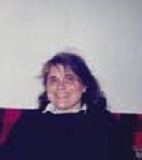
˙ Portraits of Homoeopathic Medicines – Psychophysical Analyses of Selected Constitutional Types, Vol. 1-3
˙ Nature and Human Personality: Homoeopathic Archetypes
˙ Homoeopathic Sketches of Children’s Types
˙ A Homoeopathic Approach to Cancer (co-authored with Dr. A. U. Ramakrishnan)
˙ Homoeopathic Education: The Unfolding of Experience
˙ The Power of Vision: LIfe of Samuel Hahnemann
Her three-volume Portraits of Homɶopathic Medicines – Psychophysical Analyses of Selected Constitutional Types, an in-depth analysis of the principal homeopathic personality types, was twice chosen as one of “The best books of the year” in the category of non-fiction in The Independent of London (Vol. 1 in 1986 and Vol. 2 in 1988). The reviewer noted, “If you are interested in the basic human types out of which we are all made up, then this [book] is for you… Ms. Coulter is a masterly psychologist who writes enchantingly.” Her books have been translated into several languages and are internationally hailed classics. They can be bought at Ninth House Publishing (www.ninthhousepublishing.com) in North America and from Narayana Publishers (www.narayana-publishers.com) in Europe.
KS: Welcome to Hpathy, Catherine! It is a great pleasure for me to interview you for our Constitution Ezine and I’m sure all of our readers are eager to learn from your knowledge and wisdom! You first came to know homeopathy in France when looking for alleviation of your allergies. How did your journey through homeopathy continue?
CC: In 1960, upon my return to the United States from Paris, where I was introduced to homoeopathy, I began experimenting with the remedies on myself, my family, and with close friends. Slowly and gradually over the next decade or so, I expanded my field of action. In 1973 a homoeopathic physician invited me to help him in his office, to teach physicians by the preceptorship method. I have been involved in training homoeopaths — whether by means of preceptorships, classroom lectures, or writing books — ever since.
KS: Being completely self-taught you have absorbed tremendous knowledge on the remedy pictures and personality profiles. Where do you see the advantages and disadvantages of an autodidactic study of homeopathy?
CC: Learning how to observe the patient is the prime tenet in homoeopathic education. By virtue of being self-taught, a student is forced to develop his (or her) observational skills. To be sure there exist the classic texts to assist and guide the student’s observations. But when he cannot find a given symptom in the materia medica or pinpoint in the repertory a remedy to fit a patient’s unusual symptom (such as experiencing an unaccountable sadness or even suicidal depression prior to a severe nosebleed), then the prescriber is thrown back on his own resources — i.e., his powers of analysis, drawing analogies, and interpretation. “Necessity is the mother of invention” — or, in the case of homoeopathy, of imaginative experimentation that expands one’s knowledge of the materia medica.
KS: Perseverance despite difficulties is indispensable for any aspiring homeopath. Where do you see the major challenges in studying homeopathy today?
CC: As in the past, one of the major challenges confronting the would-be homoeopath continues to be resisting the temptation to succumb to allopathic “rational” reasoning or to be seduced by the glamour of the high technology used in allopathic tests and procedures; in short, trying to make an empirical science agree with or fit into allopathic paradigms. Holding to homoeopathic reasoning when viewing a patient, with its emphasis on individualization and the treatment of a patient as a whole, and not his disease per se (except for acute and certain specific diseases), is a difficulty that ought not to be underestimated.
KS: Your portraits of various constitutional types hardly need be introduced. They are the most comprehensive descriptions which demonstrate your passion for writing and your profound knowledge of the remedy pictures. How did you come to form your ideas of the gestalt of remedy pictures, portraits and sketches?
CC: In chapter seven of Homoeopathic Education I discuss in detail how I interweave my personal observations — or my interpretation of a given symptom —with examples from history and literature and with the material in the classical texts. Generally speaking, over the years of working with homoeopaths and clients, I found that I was observing characteristics that were not in the materia medica, yet were repeatedly encountered in a remedy picture — characteristics that fleshed out the bones of the materia medica into the living types I described in my books.
KS: You pointed out that “as long as the word “constitutional” is understood to entail a form of homeopathic typology and is employed as an auxiliary tool in matching a remedy to a patient’s current symptom complex, so long is the concept entirely in harmony with Hahnemann’s teachings”. So, the “Classics” are important to you?
CC: Indeed, the classics are essential to every person involved in homoeopathic education and practice, They are the guardians and messengers of the eternal medical truths.
KS: How do provings relate to your remedy pictures?
CC: In my writings, I have tried, to the best of my ability, to assign credit to the homoeopath who first noted or best described a mental or emotional characteristic of a given remedy. Wherever there is no such reference, it indicates that the symptom/ characteristic is the result of my own observations or is the product of my interpretation of the classical notings.
KS: Many provings, especially those from polychrests, are said to be “complete”, yet clinical experience seems to contradict this. How is this possible?
CC: How can any proving be complete? Humanity is infinite in its variety of physical symptoms and the individuality of mental-emotional characteristics. Every generation discovers for itself new facets of the human soul and depths of the psyche, of inestimable value, which find a correspondence in the homoeopathic polychrests.
KS: Many homeopaths have difficulties identifying the constitutional remedy of their patients? What do you recommend to them?
CC: My advice is predictable: “Keep working on developing the observational skills.” However, it is noteworthy that at times the homoeopath can put aside attempts to approach a case directly, through the front door (taking into account the totality of symptoms or constitutional prescribing), and try to enter through a side window (addressing first a symptom or group of symptoms with an acute or specific remedy, or addressing a patient’s heredity or early childhood trauma), or even sneak in through the cellar door (by means of addressing that which Hahnemann called “the strange, rare, and peculiar” symptom). Any one of these latter approaches can eventually reveal the underlying constitutional picture — or pictures, since certain patients are a composite of two or more constitutional types.
KS: Do you support self-prescribing?
CC: Certainly, I support self-prescribing. Not only is it one of the best ways to assess what a remedy can or cannot accomplish, how its action varies in the different potencies, the optimum frequency of repetition in acute versus chronic conditions, and, as mentioned earlier, a way of discovering characteristics not observed before, but also self-prescribing necessitates close observation. In fact, the great provings of the early masters were based on self-observation.
KS: The most similar remedy is the simillimum. Do you think patients can truly be cured with partial similes, which the old masters often had to prescribe due to the lack of proven remedies ?
CC: The word “cured” is often ambiguous where holistic medicine is in question. The words “assisted”, “relieved”, and especially “healed” are more precise. Healing takes place on many levels and, judging from generations of experience, the “similes”, or second-best remedies, often prove to be as effective as one could have expected of the “simillimum” (the most similar remedy).
KS: When children are treated right from the beginning of their lives, homeopathy offers a tremendous potential to unfold their potential. Where do you see the scope of cure by homeopathy, considering deeper psychological and spiritual aspects?
CC: Since the homeopathic remedies balance (or align) the physical, mental, emotional, and spiritual energies, if the process of balancing is begun early in life, a sturdy foundation for future health is laid down both physically and psychologically, as well as a solid basis for healthy spiritual growth. Additionally, if the child is not given allopathic drugs for his or her ailment, nor vaccinated against childhood diseases (for which homoeopathy has many effective remedies — see the final chapter of Homoeopathic Education), the vital force with its innate self-healing powers can naturally and fully develop.
KS: Cancer is one of the most dreaded diseases. 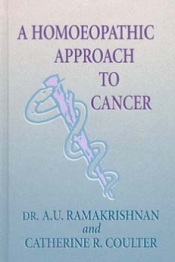
CC: From the positive reactions that I have received from my former and current trainees and readers of my book on the Ramamkrishnan approach to cancer, I continue to believe it to be a most effective method of treating this disease.
KS: Which place does constitutional prescribing have within his approach?
CC: In the Ramakrishnan Method of treating cancer there are a number of roles for the constitutional remedies. For example: at times the constitutional remedy assists the stymied nosode and/or organ-specific remedy — or the constitutional remedy can be prescribed when there is metastases after an apparent (homoeopathic) cure. I describe the different roles more fully in the seventh chapter of the book.
KS: Besides your books on the portraits of remedies and cancer treatment you have also written on homeopathic education examining the homeopathic learning process. What is the crux of the matter to become a good homeopathic practitioner?

KS: Drawing on your comprehensive knowledge of homeopathy and clinical experience you started early teaching others. It seems homeopathy was in your blood from the very beginning?
CC: Perhaps so. On the other hand, in graduate school I majored in European literature, and happily taught that subject in college for several years — until I discovered homoeopathy. Prior to that revelation I had no interest in any branch of science and, in fact, harbored a particular aversion to all matters related to medicine. But Destiny has a way of dispensing to fallible mortals life lessons that lie in direct contradiction to their plans, expectations and self-knowledge.
KS: Lack of official recognition of homeopathy is a major problem homeopaths have to face in most countries worldwide. Another problem is the lack of recognition of non-medical practitioners (“laymen”) by their medical colleagues, even if they are well qualified. Being a non-medical homeopath yourself, what are your arguments to support that homeopathy be practiced by both medical and non-medical practitioners? What was Hahnemann’s viewpoint?
CC: This important subject is deserving of a more thorough discussion than can be offered here. I go into it in some depth in the chapter entitled “The Role of the Layman” in Homoeopathic Education. By and large, I have found that laymen, who are not encumbered by previous allopathic doctrine, embrace the homoeopathic principles more easily than physicians. The principal difficulty the lay practitioner encounters is the inability to earn enough money to stick with homoeopathy. Non-recognition by their professional colleagues is a more serious problem for the homoeopathic physician. He or she is isolated and working alone, without much professional support. This is one of the “difficulties”, or handicaps, under which homoeopaths struggle.
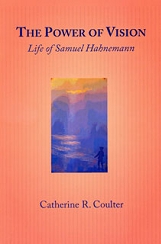
CC: The characteristic that stands out most vividly in Hahnemann’s personality is his transcendent intellect. At every step of his homoeopathic journey of discovery, a new facet of his medical genius reveals itself. By virtue of formulating the Law of Similars as the principle of cure and then proceeding to discover how to establish the similar remedy by means of “provings,” Hahnemann founded a medical discipline whose truths are eternal. That is, while unchanging in its essentials, the method still allows for expansion (of the materia medica and repertories) and innovations as to its application (for instance, beginning to use homoeopathy’s healing powers on plants). For these reasons, Hahnemann can be regarded not only as one of the greatest medical minds in recorded history (if not the greatest) but also, if the purpose of science is ultimately directed to assist human beings to understand the world we live in, improve the quality of life on earth, and alleviate human and animal suffering, then Samuel Hahnemann can be counted, among scientists, as one of the stars of greatest magnitude this world has produced.
KS: What was the most rewarding experience in your life as a homeopath?
CC: Any practitioner dispensing homoeopathic remedies, who finds himself repeatedly witnessing near-miracles of healing, will have difficulty choosing the most rewarding experience of the lot.
KS: This interview would not be complete without some comments on your deceased husband Harris L. Coulter. What legacy does he leave for other homeopaths?
CC: The legacy Harris L. Coulter left to the homoeopathic world in his scholarly work Divided Legacy is considerable. By placing homoeopathy at the very apex of empirical medicine in the historical tradition, he restored this incomparable medical science to the position of importance and dignity, the place where it belongs.
KS: Passion never ends. Do you have another book in mind?
CC: Many writers have found it unwise to talk of a work in progress or of one’s future writings. The ideas somehow dissolve into the ether. But yes, I do intend, eventually, to bring out another book on homoeopathy.
KS: Thank you very much for this fascinating interview, Catherine! I hope everyone will feel inspired to explore your newly published books and that they can soon be read in other languages as well.
Katja Schuett
Editor
Homeopathy for Everyone (Hpathy.com)

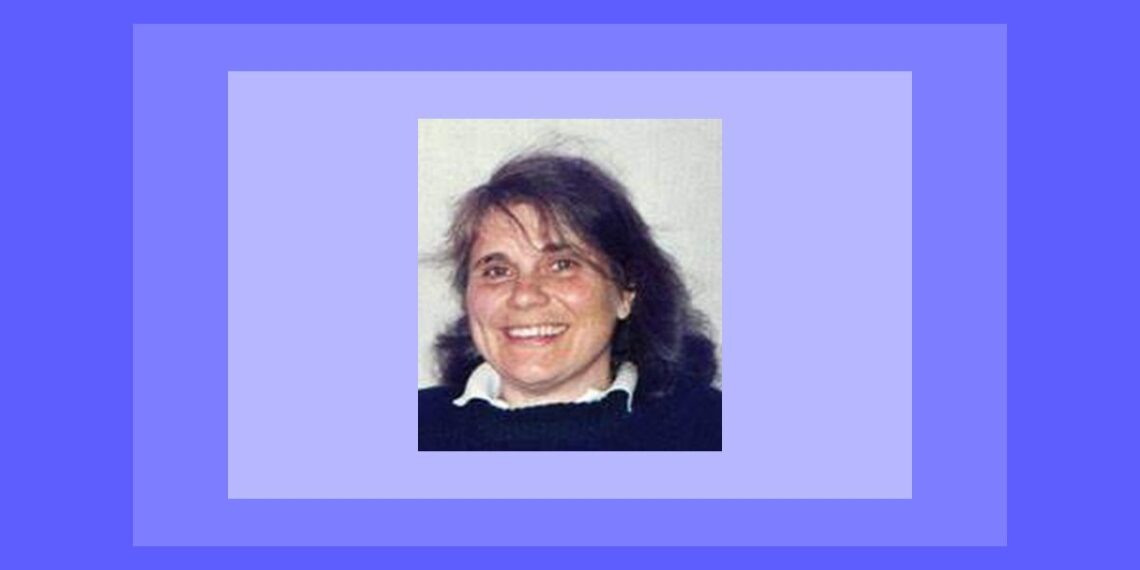
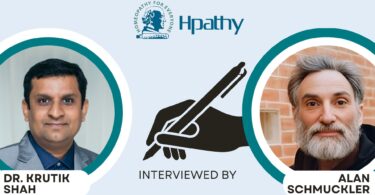

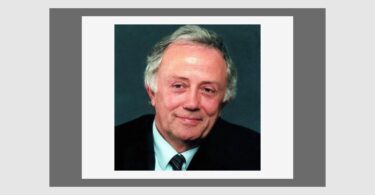
she is a role model for every one. I am motivated highly in the study of homeopathy further
Thank you Katja Schuett for presenting such a beautiful interview. The 3 volumes of ‘Portraits of Homoeopathic Medicine’ by Catherine Coulter are gems to possess. In the interview I also came to know of few other books written by her that I was unaware of.
Thanks again.
Thanks you for your comments !